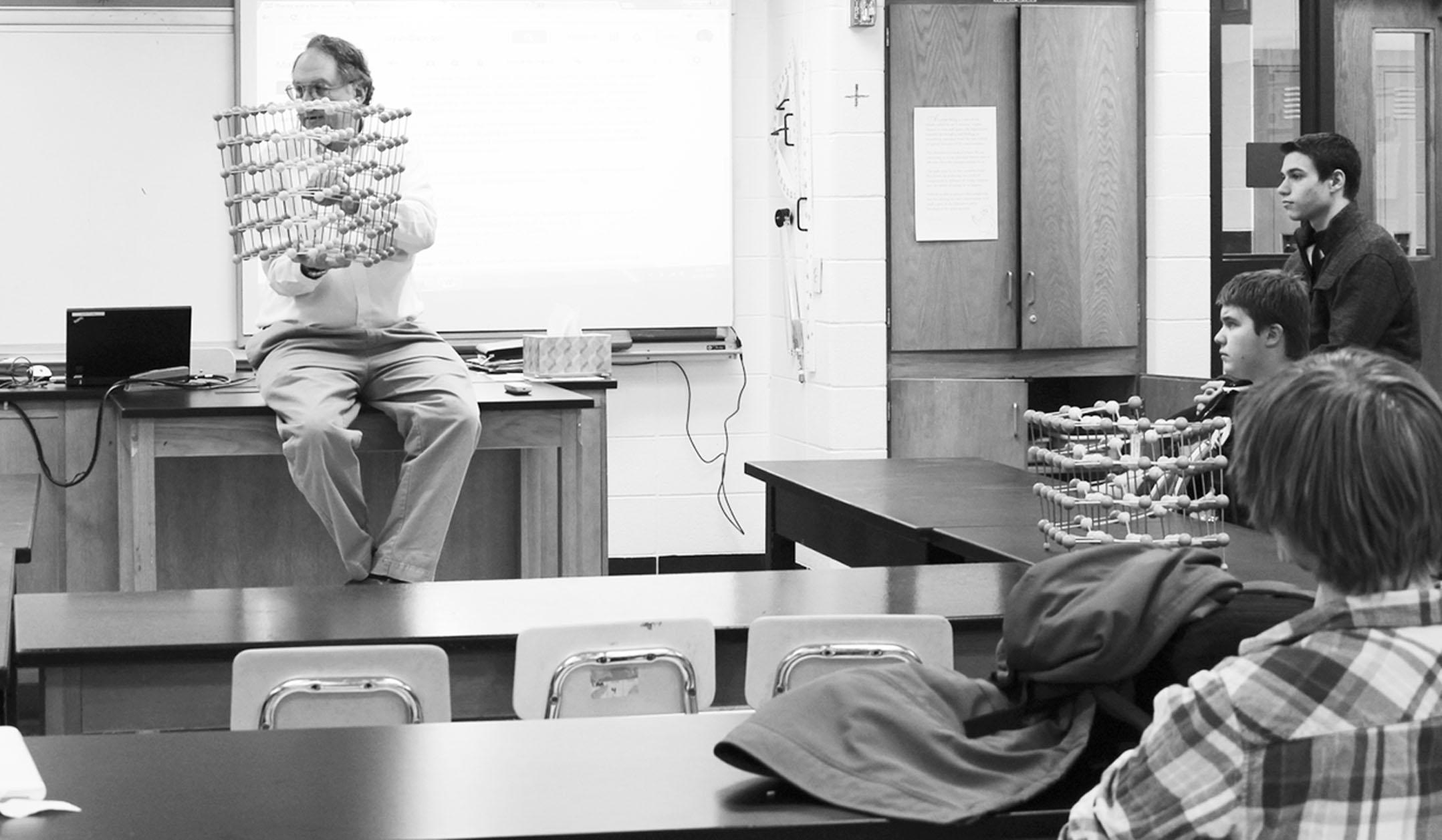
While on a field trip at Argonne National Laboratory in Lemont, Ill., a group of students walked in a zig-zag path made to help people avoid radiation.
“We were looking at a part of the [Argonne Tandem Linac Accelerator System beam line], and it was in [a concrete room] to shield it from radiation,” said junior Julia Masterman. “[The beam] was off, so we were able to go in, but the entrance was a zig-zag because radiation can only travel in straight lines, so we walked in corners to avoid radiation. If you were in the room while it was running you [would] be pretty much dead immediately, but if you just walked around a couple corners, you were fine.”
The group of students who went to Argonne were a part of a team, named “Fermionic Matters,” competing in a science competition called “Beam Line 4 Students.” The team’s field trip to Argonne was one of the resources available to them for research. The team also visited FermiLab and has physics lessons every Tuesday after school.
The European Council for Nuclear Research, or CERN, is a physics research lab hosting this competition. CERN is offering high school students the opportunity to propose an experiment to be performed within CERN’s fixed-target area, located in Geneva, Switzerland.
According to science teacher Nathan Unterman, the winning team is given the opportunity to use a fully-equipped beam line to shoot high energy protons, in the range of 1-10 gigaelectronvolts, to hit a target. The Glenbrook North team for the competition is made up of 15 students and two advisors: Unterman and science teacher Bob Froelich. It is one of the 455 international teams participating in the competition. Each team must submit a 1000-word maximum written proposal and record a one-minute video explaining their experiment by March 31.
“[CERN] tried to make [requirements] as non-restricted as possible to promote the greatest possible creativity and the greatest possible pool of ideas that can be executed,” Unterman said.
The competition allows up to nine of the team members and two team coaches from the winning team to perform the experiment at CERN.
“The winning team gets to go to CERN for a week over the summer and perform their experiment with the help of any [CERN] experts that [the team] may need,” said Masterman. “…And from there, [the team] might be able to put [its] results into a publishable paper.”
In order to arrive at an idea, the students attend field trips and are taught lessons on particle physics and relativity.
“[Particle physics] is physics at the particulate level,” said junior Daniel Nibeck, another member of the team. “So we [are] talking about protons, electrons, you even have some larger things like ions which are actual full nuclei with an electron shell. You also deal with weird particles like muons and positrons, which are basically antimatter electrons. A whole bunch of kaons and weird particles and what not.”
“Essentially we [are] looking at two sides of nuclear issues,” said Unterman. “We [are] looking at a materials project and we [are] looking at an engineering project.”
Unterman said the competition serves as a “tremendous growing opportunity” for the team, and one of the things the school strives to do is prepare students for the future.
“A lot of the problems that we are faced with in the world are things that are not going to have easy answers to come up with in a year or two years,” said Unterman. “They are things that may take 40 years of real hard research to come up with viable solutions. It [is] like the high school teacher that I had for biology who could not believe that we would have the entire human genome decoded. And not only that, but for a couple hundred dollars, you could have part of your genome decoded. …So that teacher, who is no longer alive, was able to prepare me for a future that she, A, never saw and, B, could [not] imagine, …and I [am] excited to be a part of that chain of tradition.”

